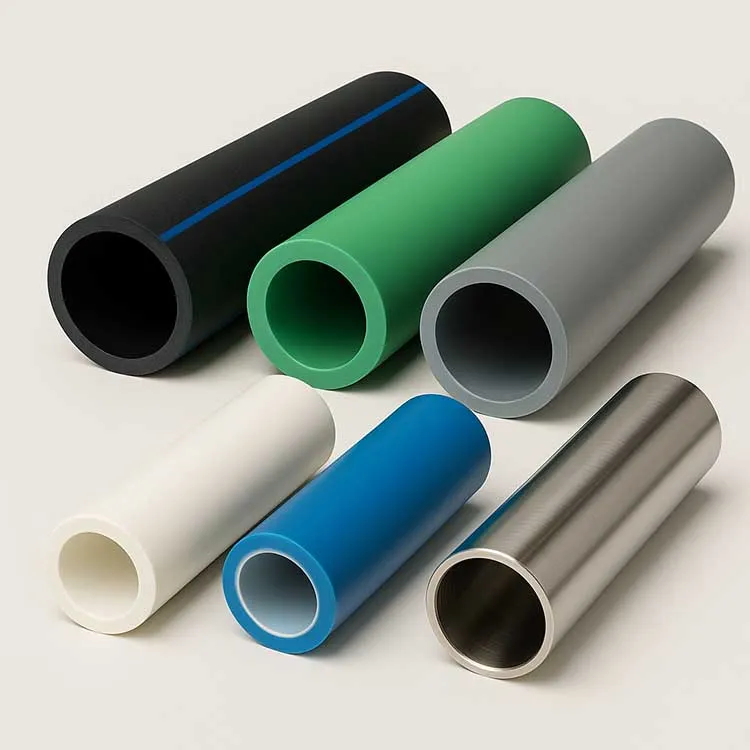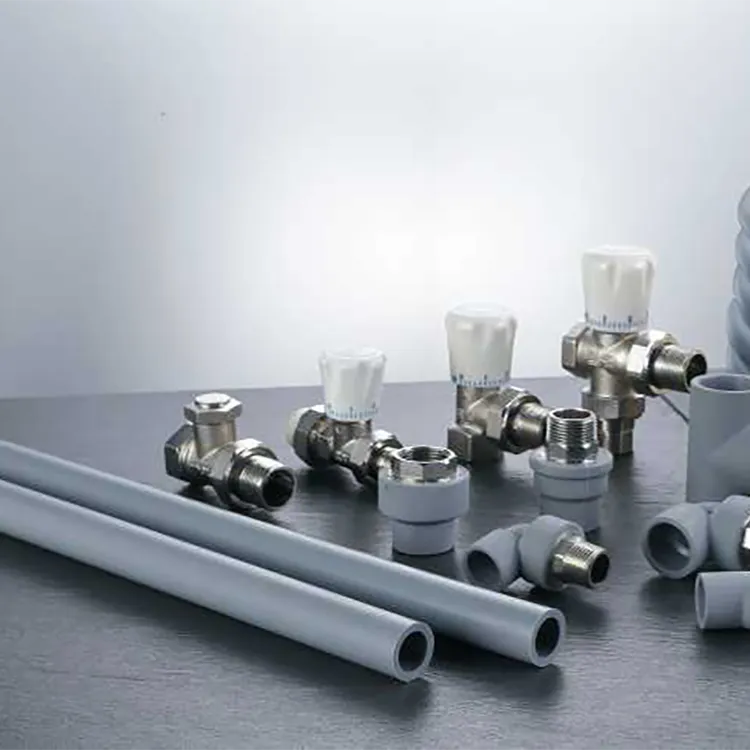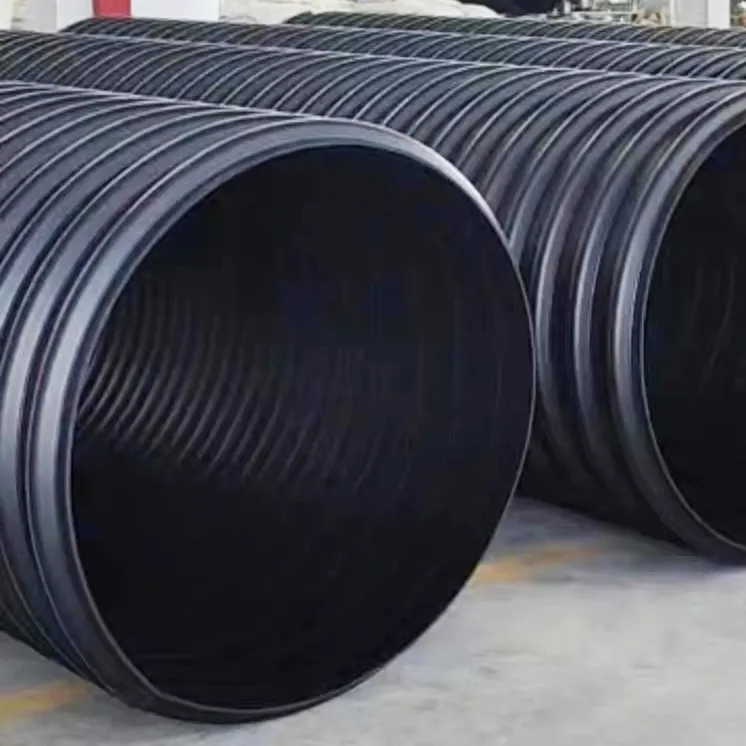Why can't PE pipes be used in indoor water supply pipes? The reason is here!
PE pipe and PPR pipe are two kinds of materials for pipes. Unlike PVC pipes used for drainage, both PE pipes and PPR pipes can be used as water supply pipes. However, the market of indoor water supply pipes has long been occupied by PPR water pipes. When PE pipes are used as water supply pipes, most of them are only used for municipal engineering pipes, and are basically not used for indoor water supply. What is the root cause of this? what is it? This is mainly determined by the following characteristics.
Modulus of Elasticity: Interfering with Pipe Stiffness and Flexibility
The material of the PPR water pipe is polypropylene, the elastic modulus is 850MPa, the rigidity is good, and the flexibility is not enough; while the PE water pipe is made of medium density polyethylene, the elastic modulus is only about 550MPa, the flexibility is good, but the rigidity is not enough; PE water pipe is used for housing construction In the water supply pipe industry, the flatness of the pipeline is not very good, it is easy to bend, it is easy to deform, and the pipeline is not good-looking. However, in the municipal engineering water supply pipe industry, because the natural environment is relatively more complex, the pipes must have excellent flexibility to resist impact, so PE pipes are more suitable for the municipal engineering water supply pipe industry. In contrast, PPR water pipes are more suitable for the water supply pipe industry of housing construction because of their good stiffness, poor flexibility, and ultra-low temperature brittleness.
Heat resistance, interfering with safe pipeline operation

Although PE pipe has very good ultra-low temperature characteristics, its high temperature characteristics are not comparable to PPR water pipes. The water supply pipe industry in housing construction, especially indoor water supply, must be applied to hot water pipelines. However, according to the basic data display information, the heat-resistant temperature of basic PE pipes is 60 °C, and the basic temperature of water supply at home will be around 50 °C. Long-term operation at this temperature will greatly accelerate the aging speed of the PE pipe, not to mention that the advantage temperature will be much higher than 50 °C, so the PE pipe is not suitable for the transportation of hot water, which is also the fundamental reason why he usually does not use it for indoor water supply. One reason.
Heat transfer: Interfering with insulated piping properties
The thermal conductivity of the PPR water pipe is 0.24, and the thermal conductivity of the PE water pipe is 0.42, which is nearly twice as high. We know that the lower the thermal conductivity, the higher the thermal insulation properties of the water pipe. If PE pipe is used in floor heating, it will give full play to its advantages. Good heat dissipation means that the actual effect of heat radiation is also stronger, but when it is used in hot water pipes, it will become its defect. The loss is large, the surface temperature of the pipe is also higher, and it is easy to get hot. As a water supply pipe for indoor water supply, it is obvious that PE pipe is not as effective as PPR pipe.
fusion characteristics: Interfering with the difficulty coefficient of pipeline decoration construction
In terms of fusion characteristics, the flanging of the PPR water pipe is smooth, while the flanging of the PE water pipe is irregular, which is very easy to block; in addition, the fusion temperature of the PE pipe and the PPR pipe is different, the PPR water pipe is 260 ℃, and the PE water pipe is 230 ℃. Using the PPR water pipe special fusion machine currently on the market often results in over-fusion and water leakage. Moreover, because the PE material is very easy to oxidize, special tools must be used to scrape off the oxide skin on the surface before welding, otherwise the integrated pipeline in the real sense cannot be produced, and the pipeline is very easy to leak. It is not difficult to see that although both PPR water pipes and PE water pipes can be welded by heat fusion , many people are not at the same level in terms of the standardized actual operation difficulty coefficient. It is also a very important fundamental reason for the application of PPR water pipes in indoor water supply without the need for PE pipes.

What is the temperature of PE pipe fusion method?
With the changes of the four seasons in a year, the temperature will also be different, which will also have certain harm to the construction and installation of PE pipes. Taking the relatively wide working temperature of 20 °C as an example, the normal PE fusion temperature should be 220 °C, and the heating time period is the wall thickness of the pipe * 10 seconds. However, depending on the temperature, relative adjustment can be carried out, and the suggestions are as follows.
1. When the temperature is below 0℃, the fusion temperature can be set to 230 degrees, and the heating time period is the wall thickness of the pipe * 12 seconds.
2. The electric fusion temperature can be set to 225 degrees at 0℃-10℃, and the heating time period is the wall thickness of the pipe * 11 seconds.
3. The electric fusion temperature can be set to 220 degrees when the temperature is 10℃-20℃, and the heating time period is the wall thickness of the pipe * 10 seconds.
4. The electric fusion temperature can be set to 210 degrees when the temperature is 20℃-30℃, and the heating time period is the wall thickness of the pipe x 10 seconds.
5. When the temperature is above 30°C, the fusion temperature can be set to 205°C, and the heating time period is the wall thickness of the pipe x 9 seconds.
According to the above detailed introduction, the reference index value in the electric fusion work of PE pipe can be obtained. The electric fusion time period will be adjusted according to the different working temperature and the thickness of the pipe. The key scope of the specification is the electric fusion temperature. : 220 degrees ± 10 degrees, heating time period: pipe wall thickness * 9~12 seconds. Strictly follow its specifications, save time and effort, and speed up the construction process.

What mistakes should be avoided in PE pipeline construction
The pros and cons of a project are all determined by the details. As a hidden transportation pipeline, PE pipe has a key function in the project. If there is a problem, it will cause great damage to the entire project. Therefore, the construction of PE pipes should pay more attention to each key point. The following integrates many years of engineering construction experience, and analyzes the common mistakes in the construction site of PE pipes, so that the construction of PE pipes can prevent such problems as much as possible.
1. Expansion joints and pipe hoop should not be used for connection
Reason: Due to the thin wall thickness of the PE water supply pipe itself, in the event of a heavy rainstorm, it is very easy to generate a vacuum in the pipe, causing the pipe to be sucked flat and cracked.
Countermeasures: Be sure to use straight water joints for connection during installation. There are two key functions of the straight water joint: 1. Connect the pipeline; 2. Use the pipeline to ventilate, overflow, and remove the expansion and contraction allowance.
2. It cannot be used for hot water transportation
Application place: 1. The water temperature of PE water supply pipe should not exceed 60℃ under normal circumstances;
2. Under normal circumstances, the water temperature of PVC-U pipes should not exceed 45 °C.
3. It should not be backfilled or applied darkly without a pressure test.
Reason: It is used to test the strength and air tightness of the pipeline to prevent water leakage during the whole application process of the pipeline and cause more damage.
Treatment countermeasures: After the installation of the water supply pipeline, the pressure test should be carried out first in accordance with the relevant technical specifications, and then backfilling and dark laying should be carried out under the condition that no water leakage occurs in the pipeline.
4, the summer pressure test should not be carried out at noon or afternoon
Reason: Because of the characteristics of raw materials, PE water supply pipe is very easy to digest and absorb the heat in the air, so that the water temperature in the pipe rises, and the high temperature can reach up to 50 °C. Therefore, when the temperature is high, the relative reduction coefficient should be selected according to the specific water temperature to measure the test pressure of the pipe.
5, should not use flat flaring
Reason: The taper of the flat flaring of the PE water supply pipe is very large, and it is difficult to completely insert the flat end of the pipe into the bottom of the flat flaring, resulting in water leakage at the pipe interface.
Treatment countermeasures: PE water supply pipes are usually connected by loops or directly bonded with bundles.
6, the pipe hoop expansion joint should not be used in the horizontal pipe
Reason: The sealing characteristics of the pipe hoop expansion joint are relatively poor, and the application in the horizontal pipe is likely to cause water leakage accidents.



981.webp)

 (1)379.webp)

294.webp)
476.webp)
420.webp)
146.webp)
460.webp)
287.webp)
274.webp)
688.webp)


